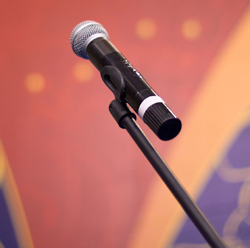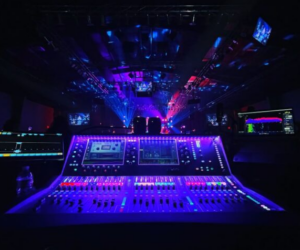Looming in the background of recent wireless microphone development lies the growth of high-bandwidth wireless broadband services, smart phones, digital television, and other spectrum-hungry applications.
Driven by the repurposing of wide swaths of RF spectrum traditionally used for wireless mics (2010’s clearing of the 700 MHz band, the upcoming Incentive Auction of the 600 MHz band, and their equivalents throughout the world), manufacturers are pursuing solutions so that the wireless mics and similar devices will remain viable in the future.
A flurry of activity over the past five years or so has resulted in a variety of digital wireless systems in both the UHF television and higher unlicensed bands – with performance, features and pricing ranging from not much above entry-level to pro touring quality.
These systems make more efficient use of spectrum, typically have lower transmitter RF power coupled with more sensitive yet selective receivers, and can cover a much wider section of spectrum within a single unit than their frequency-agile predecessors.
On the high end, the introduction of digital wireless has coincided with the push toward digital audio networking and computer control within the audio equipment chain. Touring-class wireless is likely to have the ability to be remotely monitored and controlled, and with integrated AES/EBU or Dante receiver outputs can offer the option of keeping the signal in the digital domain from the stage through the console to the loudspeaker system.
Taking Advantage
Much work has gone into enhancing the efficient use of available spectrum, so that more wireless system channels can work together without interference within a particular 6 MHz television channel or other patch of available spectrum. Key to this spectral efficiency is digital transmission of the signal between the transmitter and receiver, as the digital signal has much lower harmonic sidebands than an analog FM transmission – thus a lessened tendency to create intermod products.
In addition, digital signal requires a lower signal-to-noise ratio in order to be decoded from data packets to an audio signal. Most of the transmitters in this genre offer selectable RF transmission levels and are generally emitting levels under 20 or 30 mW at their highest settings. One professional system offers a 1 mW, high-density mode when distances over approximately 100 feet are not required, specifying up to 47 simultaneous channels within 6 MHz of spectrum.
Digital wireless will add some latency to the audio signal whereas analog will have none, though that latency is usually well below 4 ms. On the other hand, these newer technologies have enabled greater dynamic range since companding circuitry is not required, and provide a wider frequency response on both ends of the audio spectrum.
Some of these systems have also added technologies for increasing reliability and resistance to dropouts, transmitting the same signal on more than one frequency (frequency diversity) and transmitting the same audio data in different time slots (time diversity), with algorithms at the receiver reassembling the digital information into coherent order.
Because the emitted signal from the transmitter is digital and the source audio has been converted to data, the audio can be encrypted before it is sent – and therefore protected from being monitored by anything other than its assigned receiver. Security is now readily available for applications that require it. Encryption at levels of 128-bit and 256-bit is common, and one newly introduced system has upped the ante to 512-bit encryption.
















